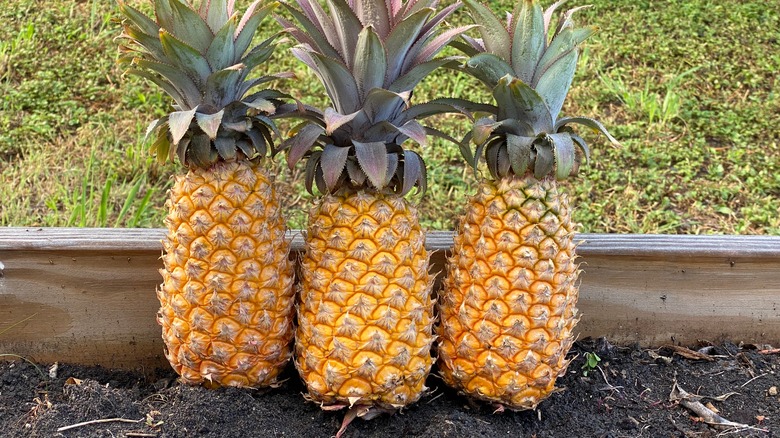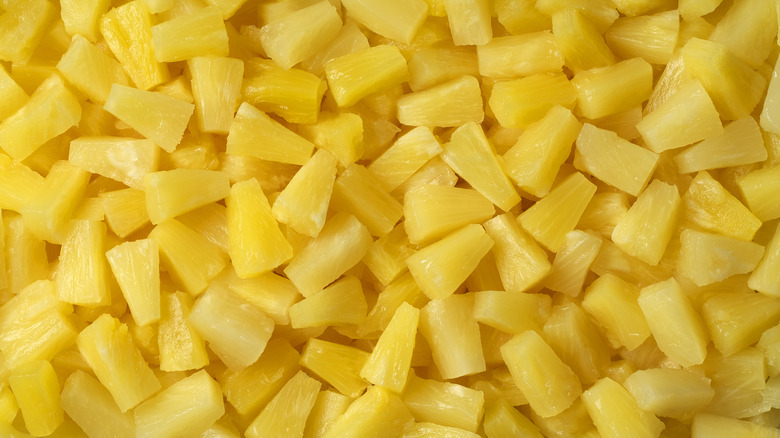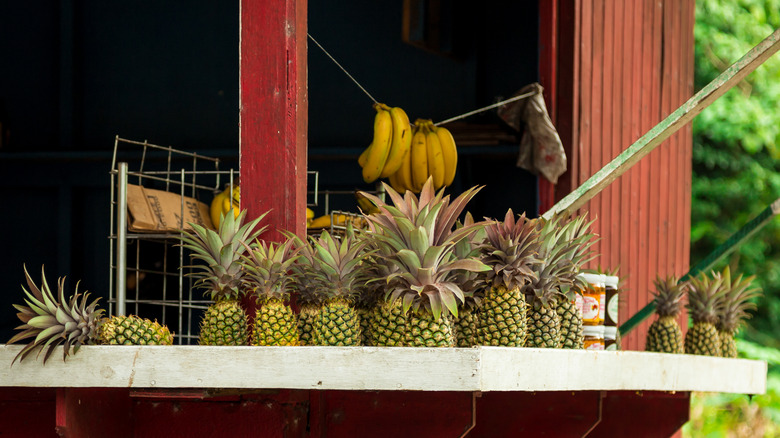The Antigua Black Pineapple Is Said To Be The Sweetest In The World
While pineapple is pretty commonly found in fruit salads, upside-down cakes, or adorning the rim of a pina colada, the acidity of the fruit can sometimes be a little much. Pineapples contain the anti-inflammatory enzyme bromelain, which breaks down protein — including the flesh on the inside of your mouth, according to Dole.
If you love the taste of pineapple, but you want to avoid too much of that acidic feeling, there is one specific variety you should seek out: The Antigua Black pineapple. The tropical fruit has a higher sugar content than other pineapple varieties and is even said to be the sweetest kind of pineapple in the world. Its soft and juicy flesh is also lower in acidity, so you won't have to worry about any unpleasant mouth feelings while you snack on some slices of the sweet fruit.
Though this variety's sweetness is what really sets it apart from other pineapples, there are also a few other differences between the Antigua Black and more standard varieties.
There are a few key differences between pineapples
Visually, the shape of the Antigua Black differs from your standard grocery store-purchased pineapples. They're a little slimmer than other varieties, and cylindrical in shape. Additionally, the entire inside of the pineapple is edible. While most varieties require you to remove the tougher inner core of the pineapple before slicing up the rest, the Antigua Black's core is softer and edible. This allows for less waste and more of that sweet, juicy fruit to be consumed.
Despite its name, the tropical fruit isn't actually dark in color. As it ripens, its outer skin remains green. Once picked, the fruits change to the traditional yellow color of other pineapple varieties. Farmers have to rely on the fruit's feel and smell when checking for ripeness in order to ensure that the fruit is ready to be enjoyed.
Its sweet flavor may be thanks to the soil on the south side of Antigua, where a majority of the fruit is grown (who would've guessed?!). Farmers credit a climate with constant sunshine and moderate rainfall for the sweetness of the fruit, too.
Where can you find the Antigua Black pineapple?
The Antigua Black pineapple was first cultivated in the 1600s. It was then that the indigenous Arawak people moved from South America to the Caribbean island of Antigua, bringing the fruit with them. These disease-resistant pineapples became such an important part of the island's culture that they were even designated the country's official fruit, and are depicted on the Antigua coat of arms.
Today, the fruit is almost exclusively grown on farms in the south of Antigua, but it has also found its way to Florida. However, just because it's grown in the United States doesn't mean it can be commonly found here — Antigua actually imports fruit from Florida growers in order to keep up with the demand on the island.
Additionally, the Antigua Black variety belongs to the queen pineapple group. These are often difficult to transport, so it's pretty unlikely that you'll ever find Antigua Black pineapples for sale in the grocery store. But if you ever find yourself on the island of Antigua, go ahead and try one of these super sweet pineapples.


